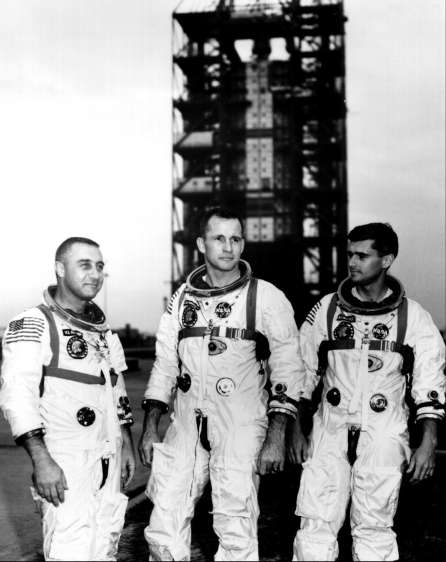

The crew of AS-204: Grissom, White, and Chaffee.
The thirteenth Saturn flight (the third Saturn IB) on 25 August 1966 was the thirteenth success. It fulfilled all major mission objectives. For the first manned mission NASA had selected two veterans and one rookie. Command Pilot Virgil Ivan Grissom had flown Mercury's Liberty Bell 7, America's second suborbital flight, in July 1961, and Molly Brown, the first manned Gemini, in March 1965. Edward White had become the first American to walk in space while on the fourth Gemini flight, three months later. Flying with these two would be the youngest American ever chosen to go into space, Roger B. Chaffee, 31 years of age.
NASA gave Grissom the option of an open-ended mission. The astronauts could stay in orbit up to 14 days, depending on how well things went. The purpose of their flight was to check out the launch operations, ground tracking and control facilities, and the performance of the Apollo-Saturn. Grissom was determined to keep 204 up the full 14 days if at all possible.
North American Aviation constructed the Apollo command and service modules. The spacecraft, 11 meters long and weighing about 27 metric tons when fully fueled, was considerably larger and more sophisticated than earlier space vehicles, with a maze of controls, gauges, dials, switches, lights, and toggles above the couches. Unlike the outward-opening hatches of the McDonnell-built spacecraft for Mercury and Gemini flights, the Apollo hatches opened inward. They required a minimum of ninety seconds for opening under routine conditions.1


